When it comes to progressive glasses repeatability and precision make the perfect progressive glasses. Here in this article, we share our tools and best practices to gather the data for our opticians and the customer to build the perfect progressive glasses.
Refraction and Measurements From your Eyes
The refraction can influence your experience with progressive glasses a lot. even the tiniest deviation from the optimum leads to a smaller field of view for you. Even with the best progressive lenses with a prescription that is slightly wrong you can not get perfect results in the end.
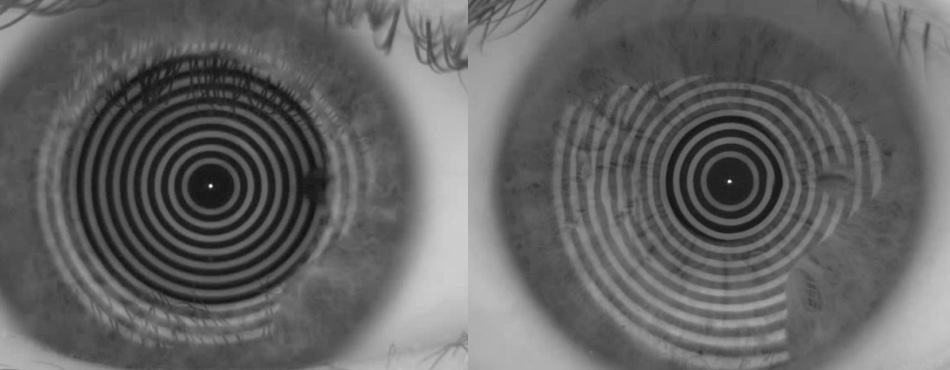
To avoid those problems in the first place it is important to see how your cornea is build. in some cases this tells the optician right from the start you will probably have more problems with star bursts at night or your visual acuity will not be as high compared to another person.
The information from those measurements are not only important for the professional but also for you. Because in most cases you can know what to expect. That is why it is so important to talk about potential problems.
Let’s face it even when we do not like to hear about problems. When the professional in front of us tells us the important points right in the beginning we will thank him for the clear consultation. When a customer finds out something does not run like he thought it would he will be disappointed.
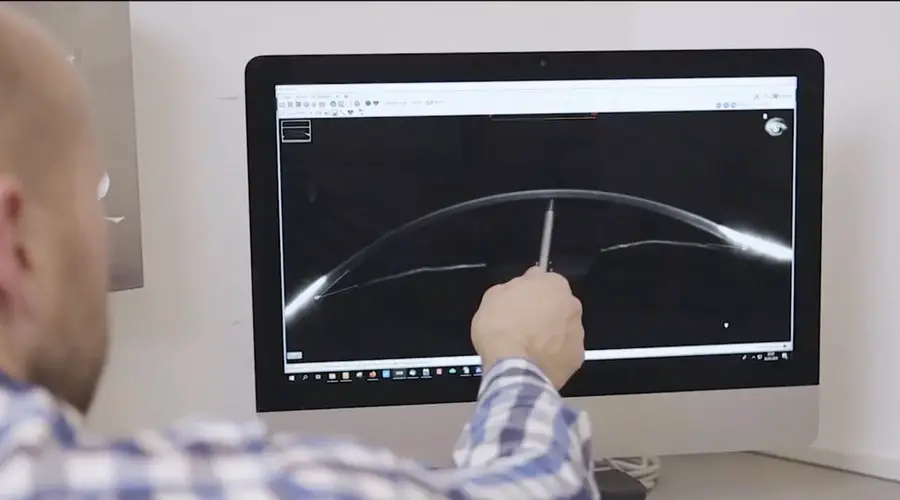
Here in the picture below you can see two of those measurements. Look at the structure of the rings. Those rings are actually perfectly centered and round. Though with some corneas you will get another picture. Deformed ring structures. In those cases, it is important to correct the shape first.
Because it is highly probable this customer will not get to the level of visual acuity he desired. This customer could wear a contact lens in combination with his progressive glasses. This sounds pretty uncommon in the first place but the customer was never able to wear progressive lenses. Now he does.
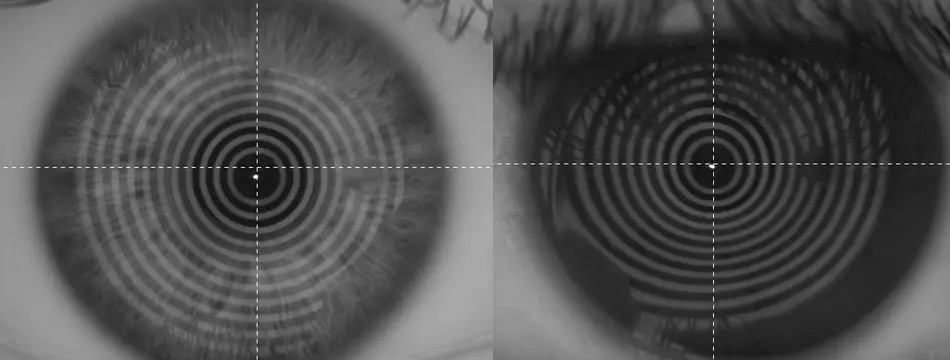
But those solution only come up in in rare cases. With most customers our opticians can finds solutions using glasses only.
Devices to Center Progressive Lenses in the Right Spot
This is one of the most critical moments when buying progressive lenses. When the optician or optometrists gathers the data about where you are looking through the glasses and how the frame sits in your face. It is literally a blink of an eye and the photos are done.
Some opticals use Videos and some use rulers. We spent a lot of time comparing different devices to get find the most accurate one. So here are some learnings about them and what to look for when centration devices are used.
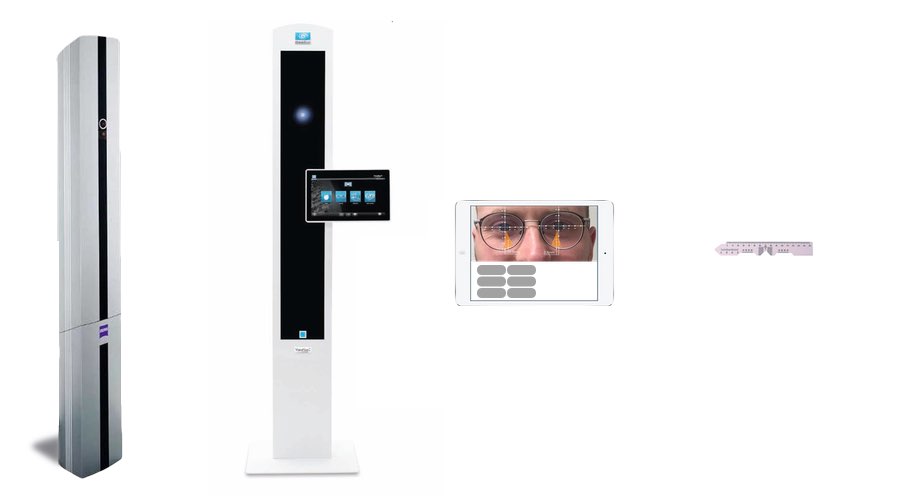
No matter how good the technology is it is important to combine it with the knowledge of an experienced optician. When fotos or videos are taken many customers tend to change their posture in order to stay more uptight.
This is a mistake because if you are not standing in the way you would normally do you are not using the spots to look through the glasses which are typical for you. An experienced optician will have a close eye on this and watch your positions through the time he spent with you up until now.
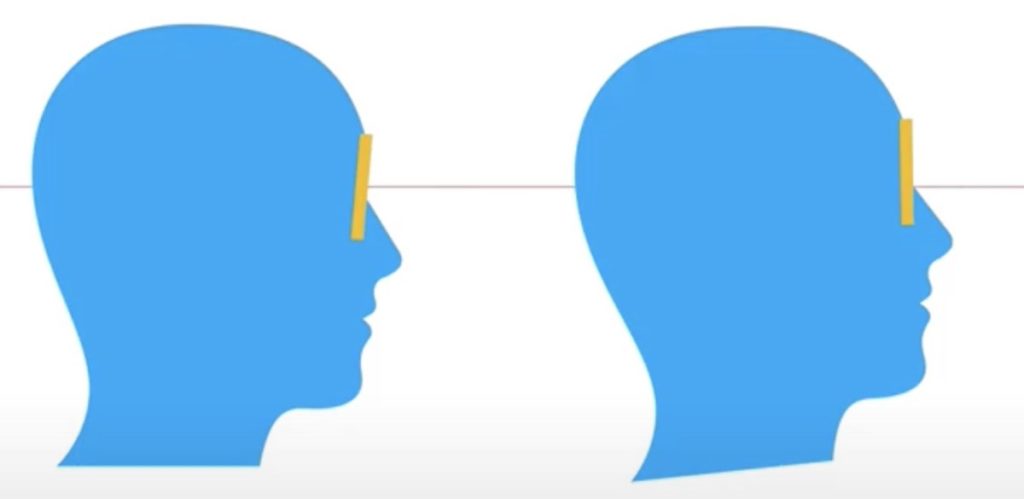
But this is only possible if the same professional guide you from start until now. If you had to hop from one “station” to another and in every step of the consulting another optician or optometrist guided you he obviously had way less time to see what position is probably off for you and what is your natural posture.
But now lets talk about the devices out there to give you some background knowledge.
Rulers and Markers (Are Outdated)
This is obviously the old school approach to find the spots you are looking through the lenses. I am in the optical industry and sold thousands of progressive glasses over the years. And this approach gives the professional a good understanding where you are looking through.

But there are a few problems here. If the dots on the lens surface where you are looking through are misplaced by just half of a Millimeter you will lose more than 10% for clear field of view immediately. No matter how high tech your lenses are.
What bothers me too with this approach is the wearer of progressive glasses should be standing when those measurements are done. But if the person is pretty tall or smaller the optician would have to adjust to the same level which often will manipulate the results if the optician is not positioning his eyes on the same level. And I have never seen a stool used in a shop.
Ipads (Look Modern but Have Their Shortcomings)
Ipads for the centration of progressive lenses are also one possibility. But there a things I also do not like about them. First of all they oftentimes require a clip on device that has some markers on it for the app to find the standardized spots and get the spots into the relation to the vertical and horizontal distances where your eyes looking through.
Usually, this approach leads more room for error because the clip-on device is slightly placed in another way every time it is clipped on the frame. remember we are talking about slightly off immediately minimizes your clear field of view.
Those clip on devices can also influence the fit of the frame if you choose to have a very light weight one. But their is still on thing to add here. And this is the distance in which the measurements are taken.
The spots you are looking through for the opticians to go after when doing the centration are the spots for distance vision. But with iPads in most cases the distance will be pretty close to you. Some apps let the person take the measurements in 1,5m and some apps require the optician to go way closer to the wearer like approximately 50-60cm.
The problem with this approach is that your eyes converge when looking onto something closer to you. But the optician should go after the spots you are using for the distance. You probably know where the is going. So I prefer devices that give me more distance from the camera to the wearer and a set up that leads to more repeatable measurements.
Towers for Video or Photo Centration
Towers or a camera system that takes pictures of you from different perspectives is definitely my favorite solution to get the centration just perfect. Some of these systems still require you to wear a special clip-on device to get the measurements done but this can definitely impact the measurements. That’s why I can not recommend it.
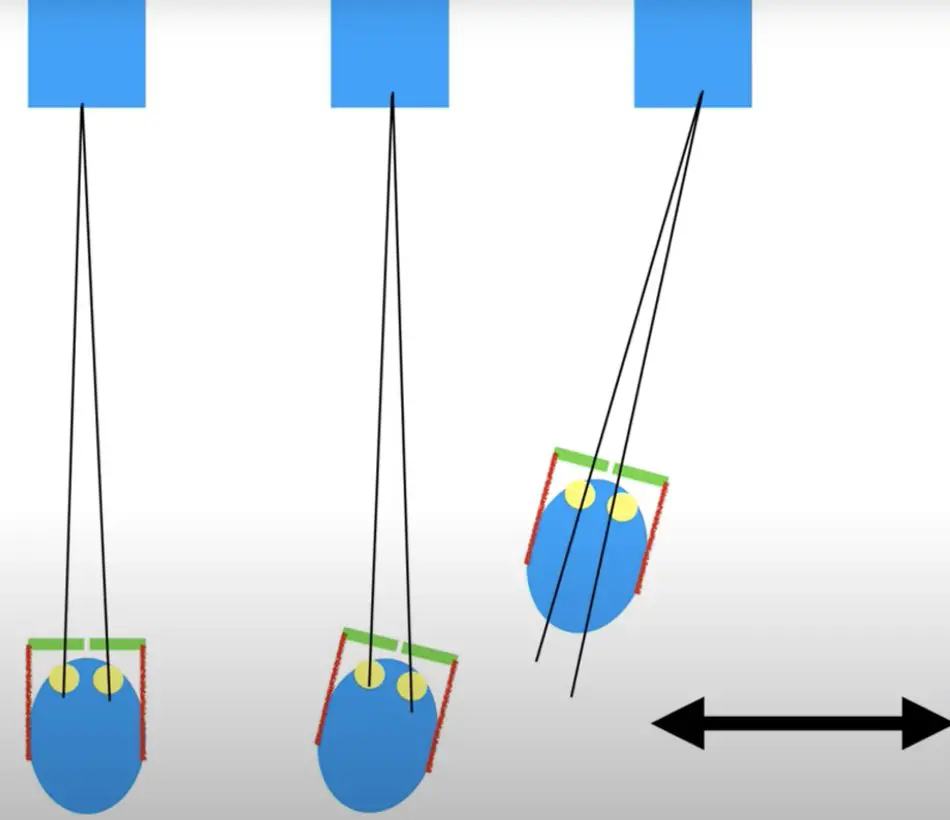
My absolute favorite is the Video Infral II which is the undisputed king of measurements when it comes to accuracy and repeatability of the measurements. The measurements are done at a distance of more than four meters so your eyes converge way less compared to other centration towers. In combination with a front-facing camera, the device takes pictures from the side too.
These pose perspectives are important because of the different angles and positions you can measure to further fine-tune your progressive lenses. And no clip-on is needed. This device has it all and I love using it every day. A lot of contemporary devices can not compete with this device.
Presenting Progressive Lens Options
When buying progressive lenses the buyer of course wants to know what one option does for him and how this process works. But oftentimes in the optical industry, all the customer hears about the better lens option is it makes the field of view wider. But is this really the case? And why? Can I tweak a chosen lens design and change the field of view while staying on a certain price point?
Yes, you can and in most cases, it does not get talked enough how to manipulate the lenses to achieve maximum visual comfort in a language you can understand. Here for example is an article from us that just talks about possible ways to influence the clear field of view in the lower half of the lens design. (If you want to know how big your clear field of view will be? Click here)
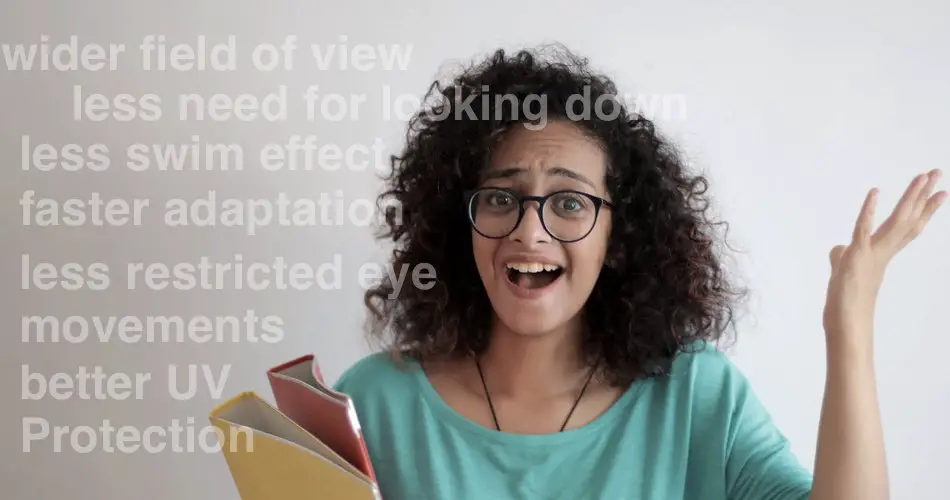
When it comes to progressive lenses a lot of customers only can tell the difference between premium and standard progressive lenses. You can find more information on this topic here.
But there is a variety of progressive lens designs and some of them will outperform others. In some cases it can be the same category of lenses but it is great if you as a customer knows that you could have chosen a short medium or long lens design. And the shorter the lens design the less you would have to look down in order to reach full reading support.
On the other hand the wider you want the clear fields of view you want have the more it makes sense to go with a longer lens design. And by the way this is one of many options and you get this one in nearly every progressive lens out there.
Presenting Frame Options for Your Progressive Glasses
When it comes to progressive lenses the fit of the frame will highly influence the width in the clear field of view you will get. So it makes sense to consider some basic points to achieve maximum visual comfort:
- The lenses should sit as close as possible to your eyes
- Do not chose extremely tilted frames
- Do not get extreme oversized frames to avoid glare on the back surface
- Do not get frame so small so it minimizes your field of view
When you look into the mirror just straight ahead you should have a distance of minimum 10mm from the middle of your pupil to the upper frame. And down you should have at least 20mm. Yes there are possibilities to go with very small frames but in most cases this will make the mid distance part very small.
Although it could make sense for people with anisometropia to go small or to consider the options we talk about in this article here to work around a slab off.
Time Scheduling When Buying Progressives
When buying progressive lenses the professional will focus on you. There is a lot to cover when buying progressive glasses. This is the reason why we, for example, schedule 90 minutes for our customers to give enough information on:
- How to use their new progressive glasses
- What changes in their new progressive glasses compared to the old ones
- Having enough time to explain everything in an easy way that is not stuffed with the professional vocabulary you can not understand
Of course, some people need more time than others to understand the concept to avoid surprises afterward. It is always bad when buying something and then learns about a feature from the product from your spouse the professional salesperson did not talk about. This is always a bad start and should not happen.
So with enough time, the professional can go through the things that are important to you throughout your daily routines and fine-tune the prescription and the glasses in general to your needs.
I wish you a great day.
